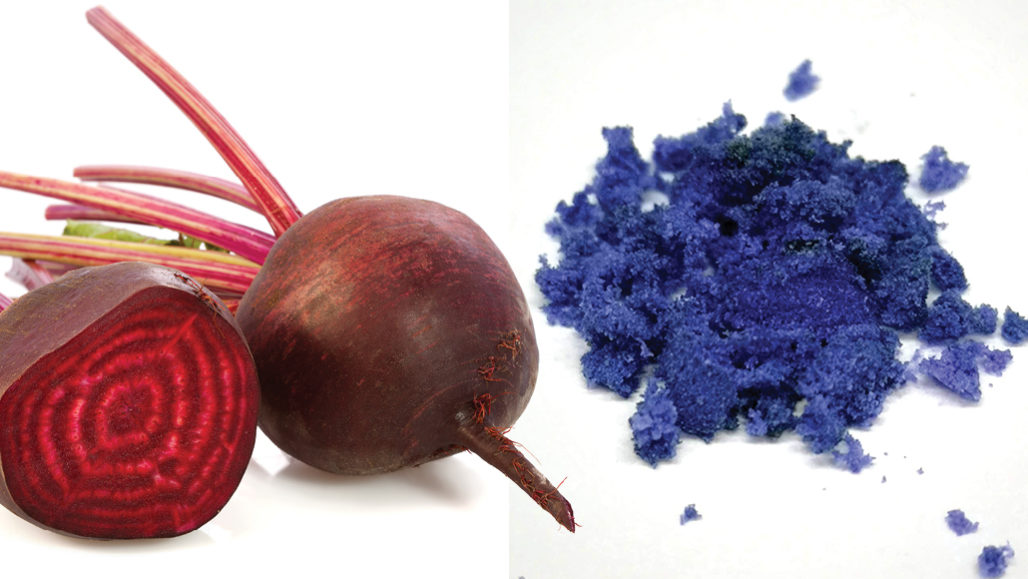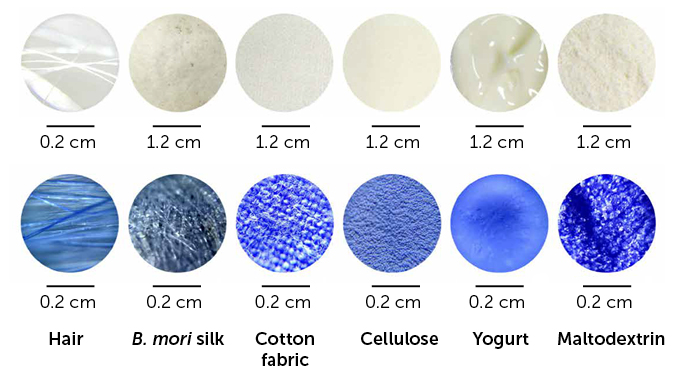Beets bleed red but a chemistry tweak can create a blue hue
Beet juice is red. Now chemists have turned it blue. It may have potential for consumers like you.
Natural pigments for food and cosmetics are in demand. Yet biologically blue pigments are hard to bottle. The brilliant blue of jays, butterflies and dragonflies is the result of light scattering, so no pigment can be separated (SN: 6/30/17). Juicing blueberries is not an option, "because the pigment doesn't last, and its blue color can change or fade," says Erick Leite Bastos, a chemist at the University of São Paulo in Brazil.
Instead, Bastos and colleagues chemically modified an edible color additive found in red beets to turn them blue, the team reported April 3 in Science Advances.
Chemists can adjust the color of certain molecules by adding alternating single and double bonds to their chemical structure. This can "create molecules that absorb yellow/orange light and, therefore, look blue," Bastos says.
Beet pigments already have some bonds in this alternating arrangement, but not enough to appear blue. Bastos speculated that he could expand the pattern and achieve the blue dye by cutting off part of the molecular structure of the beet pigment and replacing it with a compound called 2,4-dimethylpyrrole.
The dye, called BeetBlue, can fade or change many blue colorants under acidic conditions. In laboratory tests, it added pops of color to fabrics, yogurt and hair. Tests have shown that some blue dyes contain toxic metals, but BeetBlue is non-toxic to live zebrafish embryos and human cell cultures.
He said: "We still don't know if people can eat BeetBlue." This is because many additional tests are needed to prove the new stuff is safe to eat. While 2,4-dimethylpyrrole is not a natural source, Bastos suspects that his team could achieve blue with natural compounds in future work, creating a family of blues that might be suitable for different tasks.


